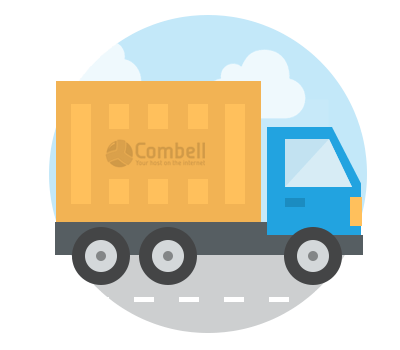Please note: new procedure for transferring your domain name!

Since the introduction of the General Data Protection Regulation (GDPR) on 25 May 2018, it is no longer allowed to show personal data from natural persons. Not even when requesting WHOIS data. Data of companies and organisations, however, may still be mentioned, though to a limited extent. This has consequences when you transfer your domain name. So please pay extra attention!
Please pay attention when you transfer your domain name!

Why is this so important? Because when you transfer a domain name to Combell, the WHOIS data is no longer automatically transferred. By default, Combell now uses your invoice details for this. But this is not correct in certain cases – for example, if you are a reseller and want to transfer a domain name at the request of your customer, the data of your customer must be recorded in the WHOIS database, not yours!
Luckily, you can edit the owner details at the end of the ordering process, if this is necessary.

Tips for a smooth transfer
 If you are considering a transfer, start by checking the contact details that Combell has from you
If you are considering a transfer, start by checking the contact details that Combell has from you- During the process, make sure you carefully review the information that is automatically entered and change this where necessary
- Please note: Registrar = the company that will manage the domain name (Combell); Registrant = the domain holder (you or your customer if you are a reseller)
- Changing details after the transfer involves additional costs, because from now on this is considered a new registration
Did you know that Combell Mover can transfer your domain name for you free of charge, as well as your website, databases, Hosted Exchange or VPS? Contact our support teams for more information!
How can you contact a domain holder from now on?

If you would like to know who owns a certain domain name, you can request this via the WHOIS database at the registry, which is the organisation that manages the Top-Level Domain. For .com, .org and the many new domain extensions, it is ICANN (whois.icann.org), for .be, .vlaanderen, .brussels it is DNSBelgium, for .nl it is SIDN, for .eu it is EURID, etc.
If the domain holder is a company or organisation: some registries still mention the address and e-mail address of the domain holder, but not the name, like DNSBelgium. Others, such as ICANN, only mention a name, with no postal address or e-mail address, but also create an e-mail address for each domain holder …@anonymised.email. E-mail sent to this address is then forwarded to the relevant company.
If the domain holder is a private person: their personal data will no longer be mentioned, not even their name. Sometimes, the direct e-mail address of the domain holder is mentioned (EURID), and other times, you can contact the domain holder via a form (DNSBelgium). ICANN uses the same method as with companies (e-mail address @anonymised.email with forward to the actual e-mail address).


